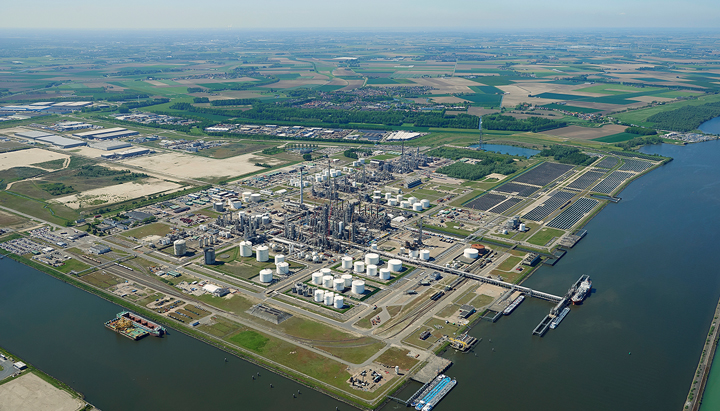Our carbon intensity
Tackling climate change is an urgent challenge. We will contribute to a net-zero world, where society stops adding to the total amount of greenhouse gases (GHG) in the atmosphere. That is why we have set a target to become a net-zero emissions energy business by 2050, in step with society. This supports the most ambitious goal to tackle climate change laid out in the Paris Agreement: to limit the rise in average global warming to 1.5 degrees Celsius.
We have set short-, medium- and long-term targets to reduce the carbon intensity of the energy products we sell, in step with society. These targets are measured using the Net Carbon Footprint metric and methodology. Our Net Carbon Footprint is a carbon intensity measure that takes into account the life-cycle GHG emissions of the products we sell, including our customers’ emissions when they use these products. For more on how we calculate our Net Carbon Footprint visit www.shell.com/ncf
We have set short-term reduction targets of 2-3% by 2021, 3-4% by 2022, and 6-8% by 2023 (compared with 2016). Our medium- and long-term reduction targets are 20% by 2030, 45% by 2035, and 100% by 2050 (compared with 2016). The updated 2035 and 2050 targets reflect the fact that we will start to include all actions taken to reduce emissions when we calculate our carbon intensity. This includes the actions we take ourselves as well as actions taken by the users of the energy products we sell.

We are taking steps to reduce emissions from our existing operations, including at our Moerdijk petrochemicals complex in the Netherlands, where we invested in new furnaces that reduce energy consumption and emissions.
We have linked the pay of more than 16,500 staff to our target to reduce the carbon intensity of our energy products by 6-8% by 2023, compared with 2016.
Achieving our target
We are already taking steps to cut GHG emissions from our existing oil and gas operations, and to avoid generating more in the future.
We are increasing the proportion of lower-carbon products such as natural gas, biofuels, electricity and hydrogen in the mix of products we sell. Customers’ emissions from using our energy products account for over 90% of Shell’s total emissions. That is why we are working with our customers to help them address the GHG emissions they produce when they use products sold by us.

We are working with our customers to help them address the GHG emissions they produce when they use products sold by us.
To reduce carbon emissions across sectors, we are partnering with our customers and others; this includes support for government policies.
We are also investing in ways to mitigate emissions through capturing and storing CO2 safely underground, or by planting and protecting natural ecosystems.
Net Carbon Footprint performance
We express our Net Carbon Footprint as the grams of CO2 equivalent per megajoule (gCO2e/MJ) produced for each unit of energy delivered to, and used by, a consumer.
Shell’s Net Carbon Footprint in 2020 was 75 gCO2e/MJ, a 4% reduction from the previous year and a 5% reduction from the 2016 reference year. In 2020, one of the major causes of this reduction was lower demand for energy. Demand for oil products experienced the most significant reduction, followed by natural gas and LNG. Another important factor contributing to the reduction of the Net Carbon Footprint was the increase in our power sales in absolute terms as well as their share of the energy mix sold by Shell. The power we sold also had a lower average emissions intensity than in previous years, which further contributed to the overall reduction.
|
2020 |
2019 |
2018 |
2017 |
||
|---|---|---|---|---|---|---|
Net Carbon Footprint (gCO2e/MJ) [A] |
75 |
78 |
79 |
79 |
||
|
||||||
Lloyd’s Register Quality Assurance Ltd has provided limited assurance for our Net Carbon Footprint assertion for each year from 2016 to 2020. Limited assurance means nothing has come to the auditor’s attention that would indicate that the Net Carbon Footprint data and information as presented in the Net Carbon Footprint assertions were not materially correct.
Data sources
The Net Carbon Footprint calculation uses production and product sales data taken from the Annual Report and Accounts. Any other product sales data used for the calculation but not disclosed in the Annual Report and Accounts are disclosed in this Sustainability Report.
For more on how we calculate our Net Carbon Footprint visit www.shell.com/ncf
Scope of our Net Carbon Footprint
Emissions from energy products included within the Net Carbon Footprint framework




